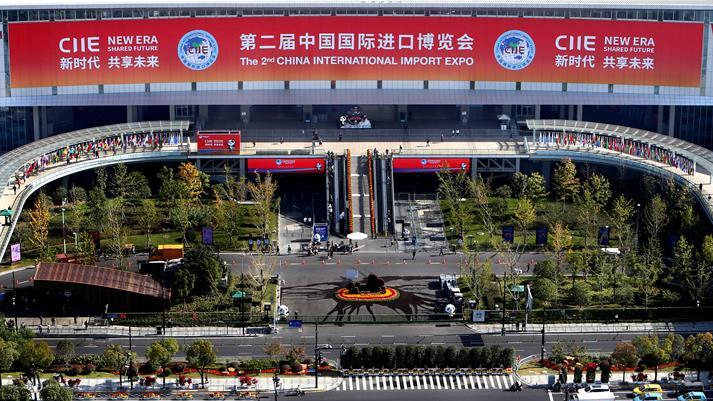BRI & CIIE: China is further on the road to opening-up
At the 2018 Boao Forum for Asia, Chinese President Xi Jinping likened China's four decades-long reform and opening-up journey to a "second revolution" in China's modern history.
At the 2018 Boao Forum for Asia, Chinese President Xi Jinping likened China's four decades-long reform and opening-up journey to a "second revolution" in China's modern history. Standing at a new historical juncture in 2019, China has carried on resolutely with the reform and opening-up agenda. Pro-market policies, inter alia, on free trade zone, tax reform, market access expansion, financial sector liberalization, investment protection, and stock market innovation were successively enacted over the past twelve months.
It is thus no surprise that the World Bank's Doing Business Report 2020 lists China as among the world's top ten business environment improvers. Even the Washington-based neoliberal think-tank, The Heritage Foundation, moved to revise up China's Economic Freedom Index score for 2019, acknowledging notable improvements in such areas as judicial effectiveness and labor freedom.
Against this broad backdrop of unrelenting national economic reform, two China-hosted events in 2019 stood out as best epitomizing and demonstrating what President Xi called "the great spirit of reform and opening-up" in China.
The first event was the 2nd Belt and Road Forum for International Cooperation (BRF), attended by 38 heads of state, government and international organizations in April. The BRF took stock the achieved progress of the Belt and Road Initiative (BRI) cooperation between 2018 and 2019. More importantly, it marked the turning point from a "freehand brushwork" to a "meticulous painting" approach guiding the implementation of the BRI to accomplish win-win cooperation and interconnected economic prosperity.
To this end, at the BRF, China pledged to open the BRI up for greater international and private participation, step up multilateral cooperation in infrastructure projects, and uphold international best practices pertaining to development financing, infrastructure construction, labor, environment, transparency, and anti-corruption. Much importance was also attached by China to synchronizing the BRI with other major power connectivity initiatives in order to reduce redundancy while defusing geopolitical risks.
In 2019, the BRI has turbocharged China's economic integration with surrounding countries and into the world economy at large, via creating diversified logistics routes and removing policy barriers to cross-border commerce. For example, the development of the New Eurasian Land Bridge and the China-Central Asia-West Asia Economic Corridor under the framework of the BRI paved the way for the launch of the China-Eurasian Economic Union Free Trade Area in October 2019.
By the same token, the advancement of China-Indochina Peninsula Economic Corridor also provided renewed impetus to strengthening China's trade relations with contiguous Southeast Asian nations through bilateral pacts (e.g. China-Singapore upgraded trade agreement) or mini-lateral platforms like the Regional Comprehensive Economic Partnership.

The other major event worth noting is the 2nd China International Import Expo (CIIE), held in November 2019.
As the most preeminent import exhibition in the world, the six-day CIIE saw more than 180 economies and international organizations and over 3,800 companies in attendance. The value of business contracts emerging from the CIIE hit 71.1 billion U.S. dollars, up almost a quarter from the inaugural CIIE in 2018. Numerical highlights aside, the rationale for holding such exhibition geared towards increasing imports into China is worth recalling.
Some have contended that China is trying to correct "trade imbalances." This interpretation cannot be more misplaced. In fact, the CIIE is China's heartfelt invitation to the world, encouraging the global community to enjoy and reap the benefits of China's economic reform and the "consumption upgrade" by average Chinese citizens. This is a noble course and should not go unnoticed as we review the year 2019.
From another perspective, the CIIE also signals China's readiness to adjust its economic development path for the better. China's traditional export-led economic model driven by external demand in developed markets in the United States and Europe has run its course, especially in view of the 2008 global financial crisis, euro crisis, and the on-going Sino-American trade war.
Imports and domestic consumption are on the way to becoming the new drivers of sustainable economic growth for China. In this regard, the CIIE plays an indispensable role in terms of enlisting the help of foreign businesses to assist in China's economic restructuring.
With the BRI advancing external integration with the world economy and the CIIE driving internal economic transition, China is indeed further and firmly on the road towards comprehensive reform and opening-up amid a remarkable "second revolution."

